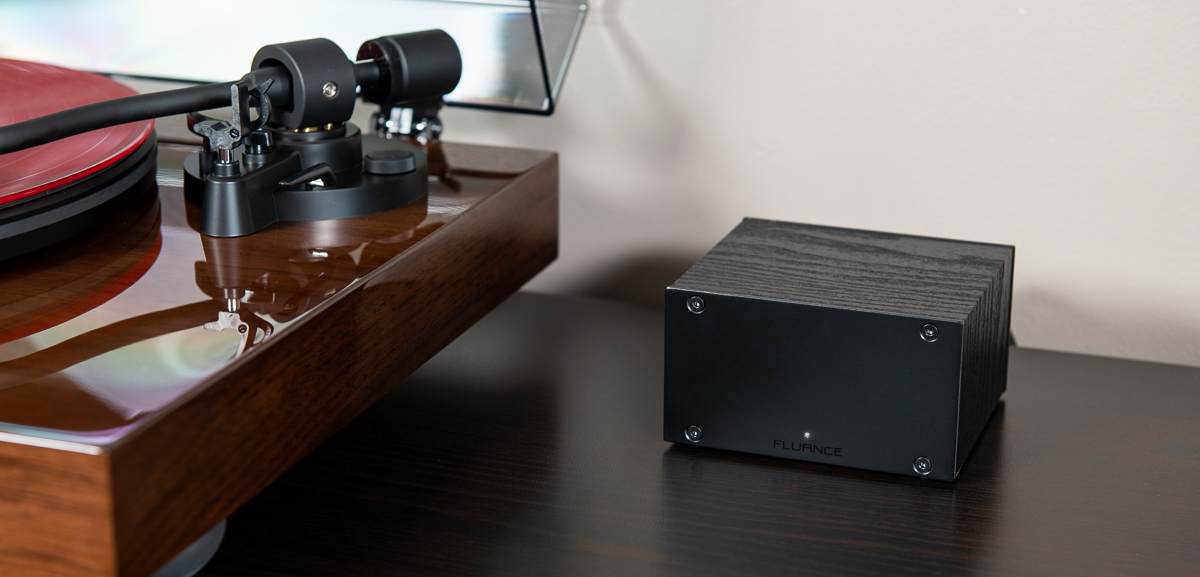Contents
What is a Phono Preamp?
A preamp serves the primary function of amplifying the signal from your turntable to a level that can be played properly through your sound system. A preamp is required somewhere in your audio system in order for you to have proper record playback.
Do You Need A Phono Preamp?
If you want to play a turntable than yes! But you might already have one. There are basically 4 possibilities for incorporating a preamp in your system.
1. Turntable with Built-in Preamp
Numerous turntables such as the RT80 and RT81 offer a built-in preamp. This allows you to connect directly from your turntable to a set of powered speakers or passive speakers with a separate A/V Receiver or Amplifier. No other components are required for you to integrate your turntable into an audio system.
2. Amplifier/Receiver with Built-in Preamp
Some amplifiers or A/V receivers (AVR) have a built-in preamp. These are typically higher end AVRs, 2-channel receivers as well as many vintage amplifiers. You can look for 2 “clues” to see if they have a built-in preamp. The first clue is one of the inputs will be labelled “Phono”. The other is you will see an input on the back called a ground terminal. You can plug any turntable into one of these systems and either use the preamp built into your turntable, or the one in your receiver. Depending on which one you want to use you may need to bypass the pre-amp in your turntable if you wanted to use the one in the receiver.
3. Powered Speakers with Built-in Preamp
Some powered speakers have a phono preamp built-in as part of their various audio inputs. This allows you to connect a turntable with no built-in preamp such as an RT82 directly into the powered bookshelf speakers with no other components needed.
4. External/Stand Alone Preamp

You can utilize an external preamp with turntables with and without a built-in preamp. This allows you to connect to any existing audio system whether its a passive speaker system or powered speakers. You can even use an external preamp for many turntables that already have one built-in. Typically someone would do this if they wanted greater performance from a higher quality preamp than the one that was built-in.
At the end of the day you will need a preamp in one of those configurations above to properly play records. If you’ve never built your own component system but only used store bought stereos, you may not be aware there is a preamp installed as part of your regular amplifier. Professional sound engineers use sine wave charts and technical schematics to determine what a particular preamp might need for it’s particular means of use, but the bottom line is there has to be a preamp somewhere in the system. Without it, you’ll either get no sound at all or screeching feedback when you try to amplify the music you want to hear.
Benefits of an Internal Preamp
Although there are benefits to an external independent preamp, there is nothing inherently wrong with an amplifier that has an internal preamp. Many great systems use an internal preamp, it makes for a simpler system for the layman to use with less wires to connect and fewer potential problems which may cause the system to fail. It is also one less physical component to worry about. However, it also takes out a portion of the control you have over how you want the music to sound which is why most people who work with music on a professional level prefer an external preamp.
Benefits of an External Preamp
The main benefit of an external preamp is the amount of control is gives you over the music you play. Whether you prefer classical music and opera recorded live in the acoustics of a theater’s music hall, or if you enjoy the smooth rhyme and rhythm of Snoop Dog’s hip-hop studio style, or the mellow guitar solos Jerry Garcia played with the Grateful Dead in huge coliseums, they were each recorded under different circumstances and have nuances as to how they’ll sound best when played back. One of the greatest benefits of an external preamp is ease of upgradeability. By having a component system you can over time replace and upgrade each component to a higher performing unit.
Music Systems for the Aficionado
A music aficionado often has the same ear and sense of quality as the professional, and therefore understands how well vinyl records work for sound comparative to other mediums along with how a well used preamp can give great music the sound it deserves instead of sounding generically “blah.” Home systems are available for the aficionado at reasonable pricing rates so you can have professional quality music at home when you want to listen to great music without having to go out and hear someone else play it for you.
Home Component Sound Systems
Component systems work really well for a home sound solution, as they provide control over your music. A phono preamp can be upgraded as needed without the expense of changing the entire system. A component system also allows you to mix and match compatible brands if the like the features of one particular product but feel a different preamp provides better sound. Likewise, if you need other music sources you can add them at will without having to change the phono and preamp you already like and without having to run multiple systems. When you put together a great system you love, you’ll be happy with your music for years to come.

Fluance High Fidelity Phono PreampPrecisely convert your turntable phono signal to line level, featuring an ultra high-accuracy frequency response to faithfully reproduce the original recording to the RIAA standard. Learn More |

Leave a Reply
You must be logged in to post a comment.